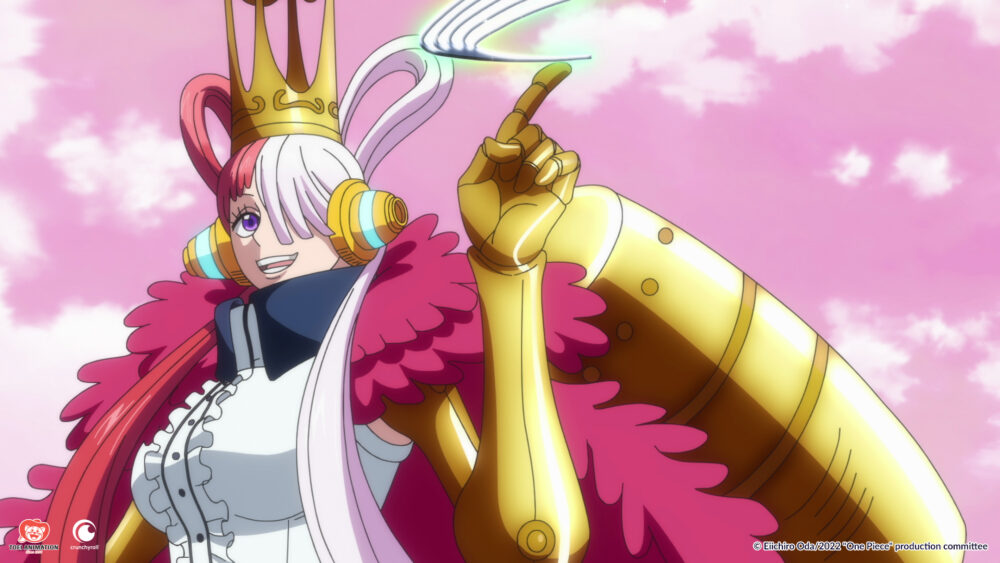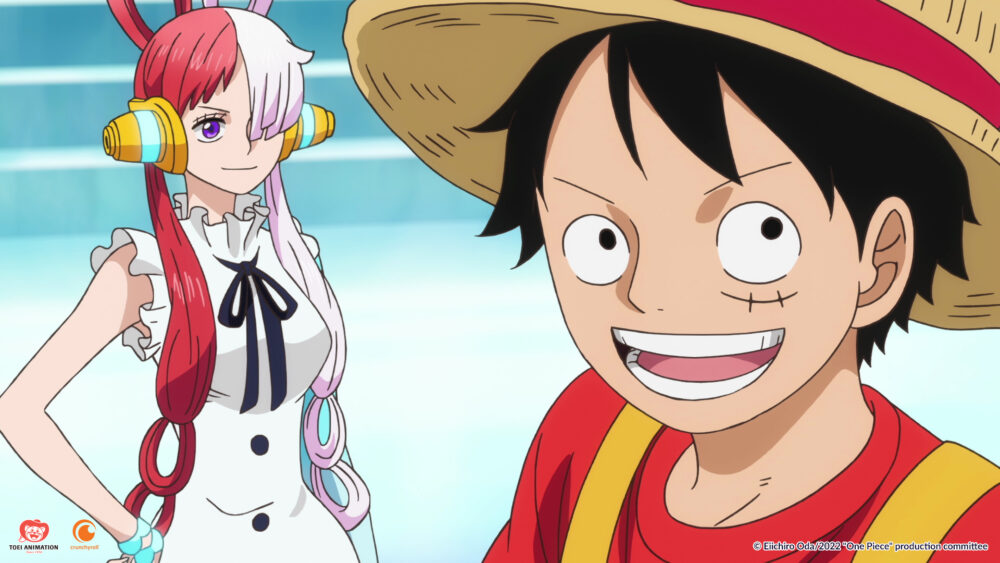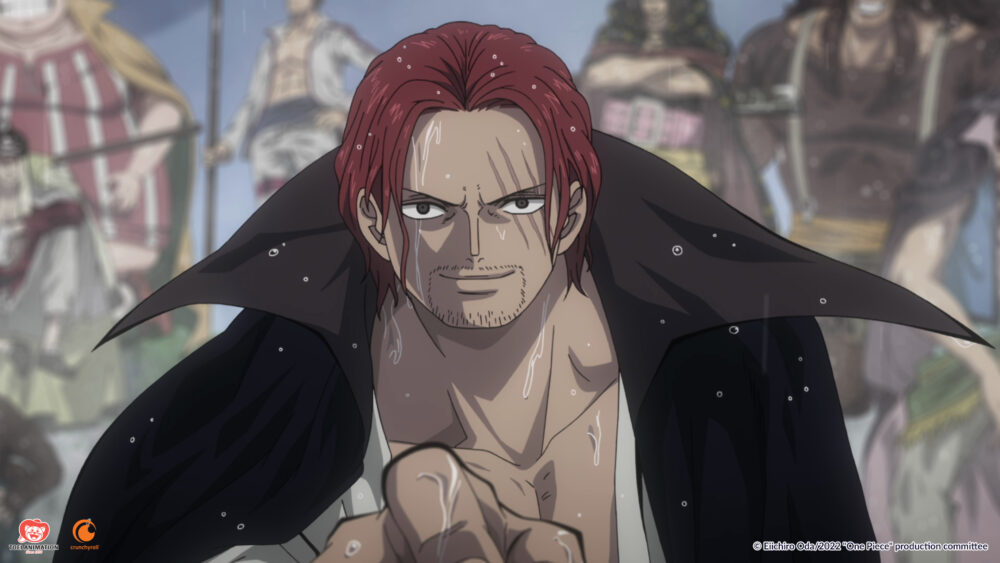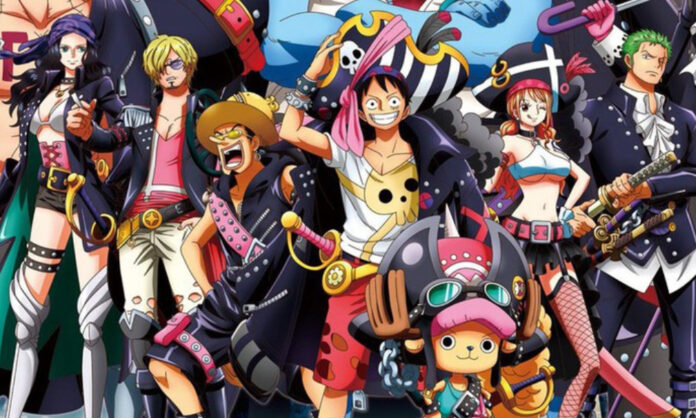***This article originally appeared in the December ’22 issue of Animation Magazine (No. 325)***
Straw Hat Pirates captain Monkey D. Luffy’s rubbery features can’t compete with Tom Cruise’s chiseled good looks, but with tickets sales of more than ¥16.2 billion (about USD $111.7 million), One Piece Film Red outdrew Top Gun: Maverick to become the #1 box office hit in Japan of 2022.

Director Goro Taniguchi was an obvious choice to direct the 15th feature in the hit One Piece franchise. He directed the first animated adaptation of Eiichiro Oda’s record-breaking manga, the OVA One Piece Defeat Him! The Pirate Ganzack! in 1998. Oda calls Taniguchi “the first person to ever animate Luffy.” Yet the director approached the project with a certain hesitancy.
“That first One Piece film was the first thing I directed, so to come full circle and return to the franchise produced a mix of emotions,” he said in a recent interview translated by Mike McNamara. “There was a certain amount of nostalgia, but also a certain amount of anxiety — or even fear — that things might have changed. What would the dynamic be like?”
A Very Popular Pirate
The warm welcome he received at the Toei Animation studio helped allay Taniguchi’s fears. But the staggering popularity of One Piece made the assignment daunting: More than 516 million volumes of the manga have been sold (earning it a place in The Guinness Book of World Records); in addition to the 14 previous features, the TV series recently passed the 1,000-episode mark — not to mention games, character merchandise, cosplay costumes et al.
“Because it’s such a long-running franchise, I think fans have their own interpretation of Luffy, as did a lot of the staff working on the project,” Taniguchi explained. “As the director, I have my own interpretation of what I believe Luffy can do. But whatever I bring to the table, I can’t create a version of Luffy that will be disliked by the fans or by the staff I’ll work with over the years we’re in production. Balancing those different aspects was one of the most difficult parts of the assignment.”
In addition to the fans and artists, Taniguchi also had to consider the wishes of Oda himself. “Oda-sensei wanted this project to be applicable to our current social climate,” Taniguchi continues. “Early on, I talked with screenwriter Tsutomu Kuroiwa about finding that message and its significance. Oda-sensei took an active part in the story development, and although he made some requests I couldn’t manage, it was a very rewarding process. Oda-sensei was able to leave his signature on the film through this process.”

The creators came up with a story that brings Luffy and his crew — along with countless other pirates and hordes of fans — to Elegia, the Island of Music, for the first live concert ever given by cyber-sensation Uta. The emotional stakes are raised enormously when Luffy discovers Uta is the daughter of one of the world’s greatest pirates, the noble Red-Haired Shanks. (When Luffy was little, Shanks sacrificed his left arm to save the boy from a shark; he later gave him his trademark straw hat.)
Uta’s mesmerizing performances conceal a well-intended but dark power. Sorting out the problems she causes involves the celebrations, misunderstandings, scheming villains, no-holds-barred battles, dire threats and ferocious declarations of noble intentions that One Piece fans expect — before the inevitable happy ending.
Uta’s singing voice is provided by Ado, the pseudonym of a teenage singer who’s been a pop sensation in Japan since 2020, when her first song racked up over 100 million plays on YouTube in just 148 days. Taniguchi credits Ado with inspiring the Toei artists in more ways than one.

“Ado was very curious about each song, the circumstance under which it’s sung, and even the mental state of Uta during the performance,” he says. “We had to prepare a lot of documentation for her. When her team would send us samples, we would circulate them among the crew members. I think that motivated them to pour even more into their artwork because they didn’t want the music to overshadow the animation.”
Executive producer Shinji Shimizu’s and producer Hiroaki Shibata’s knowledge of the One Piece universe enabled to tackle a variety of challenges, from budget questions to adapting to changes in production pipelines to incorporating snazzy 3D CG elements into the concert footage while retaining the familiar drawn look of the beloved characters.
“I’ve been involved in the franchise since One Piece Film Z (2012),” says Shibata. “Shimizu-san and myself share an interesting dynamic. We can finish each other’s sentences in terms of knowing what the project’s demands are and how we can solve different issues. Shimizu-san is the broad-brushstroke guy; I’m more precise in how I approach certain things. Shimizu-san sets the scope, the overall scale of the project. I’ll go in surgically to figure out how to push the project forward.”

All three men are eager to see if One Piece Film Red can repeat the success it enjoyed in Japan in the U.S.A. Shimizu comments, “In Japan, One Piece is a huge franchise. I’m happy to hear fans talking about it in the States, as I love America. I’m eager to see if it can reach a certain level of popularity in the U.S.”
“Because One Piece is such a long-running franchise, I’m sure there are people who have heard of it, but may not have seen the animation or read the books,” Taniguchi concludes. “Or maybe they know some of Luffy’s adventures, but not all of them — fans here have diverse levels of engagement with One Piece. But I think Red is very accessible regardless of how deeply you’re invested in the franchise. It offers action, humor, emotional drama and maybe a few tear-jerking moments. We’ve really maximized what I believe the animation medium can accomplish. I hope it provides a starting point for people to board the One Piece ship and join us on this adventure.”
Crunchyroll releases One Piece Film Red in theaters across the U.S. and Canada on November 4.









 Win a Funko X Lilo & Stitch Prize Pack!
Win a Funko X Lilo & Stitch Prize Pack! 


